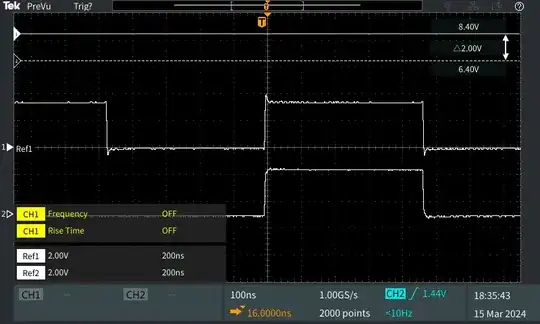Recently I purchased my very first scope and noticed something I'm really curious about its cause.
It's a 100 MHz scope, when I was testing to see the ringing of a 1 MHz clock signal with different values of series termination, using 100 MHz probe and 200 MHz shows quite different waveform:
Ref1 (top, 200 MHz probe) clearly showed the ringing exists while on Ref2 (bottom, 100 MHz probe) the signal already looked a little bit "not so sharp".
To my understanding, the bandwidth of scope and probe should be at least 5x of the signal frequency under test. In this case the signal is 1 MHz, which should be very easy for both 100 and 200 MHz probe to capture.
What is causing such huge difference?
